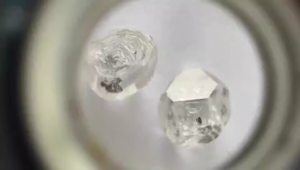There was a time when beards were seen as unprofessional and scruffy. But over the last few years, beards have made a big comeback. In fact, many celebrities – from George Clooney to David Beckham – are sporting beards these days. So if you’re thinking of growing a beard but aren’t sure if you can pull it off, don’t worry – a beard transplant could answer your grooming woes. Read on to find out more.
What Is A Beard Transplant, And How Does It Work?
A beard transplant is a surgical procedure that involves taking hair follicles from another part of the body – usually the scalp – and transplanting them into the beard area. At Ahi Clinic, a beard transplant clinic in London, the surgeon will first make tiny incisions in the skin where the hairs are to be transplanted. Then, using very fine needles, they will carefully insert each hair follicle into the incisions. The transplanted hair will then start to grow just like your natural hair.
Beard transplants are usually performed under local anesthesia, meaning you’ll be awake during the procedure but won’t feel any pain. The whole process takes around 3-4 hours, and you can usually go home the same day.
It can take up to 3 months for the transplanted hair to start growing, and it can take 6-12 months for the full results to be visible. Once the hair has grown, you’ll need to continue caring for it just like your natural hair. This means using a mild shampoo and conditioner and avoiding harsh chemicals and heat treatments.
Why Might You Need A Beard Transplant?
There are a number of reasons why you might need a beard transplant. For some men, it’s simply that their beard doesn’t grow evenly. This can be due to genetics or other factors such as hormones or an underlying medical condition. A beard transplant can help to even out the beard, giving you a fuller, more uniform look.
Another reason why you might need a beard transplant is if you’ve suffered from an injury or skin condition that has left your beard area looking patchy. Conditions such as burns, vitiligo and alopecia can cause hair loss in the beard area. But, again, a beard transplant can help to restore your natural look.
Finally, some men simply want to have a fuller, more luxurious beard but don’t have the genetics for it. If you’ve tried growing a beard, but it’s just not happening, a transplant could give you the thick, luscious beard you’ve always wanted.
What Are The Risks Of A Beard Transplant?
As with any surgical procedure, there are some risks associated with a beard transplant. These include infections, bleeding, scarring and reactions to the anesthesia. However, these risks are relatively rare and can usually be avoided by choosing an experienced and qualified surgeon.
What Is Some Aftercare For Beard Transplants?
Once you’ve had your transplant, it’s important to follow the aftercare instructions given to you by your surgeon. They will usually advise you to:
- keep your head elevated for the first few days
- sleep with your head elevated for the first week
- apply a sterile dressing to the transplanted area for the first few days
- avoid touching or scratching the transplanted area
- avoid strenuous exercise for the first week
- avoid exposure to sun, saunas or steam rooms for the first few weeks
In general, you should be able to return to your normal activities within a week or so. However, it’s important to take it easy and not overdo it. It can take up to 12 months for the full results of your transplant to be visible, so try to be patient!
Bottom Line
A beard transplant could answer your grooming woes, giving you a fuller, more uniform beard that you can be proud of. So if you’re considering this procedure, make sure to do your research and choose a reputable surgeon. Once you’ve found a surgeon you trust, you can be confident that you’ll get the results you want.





